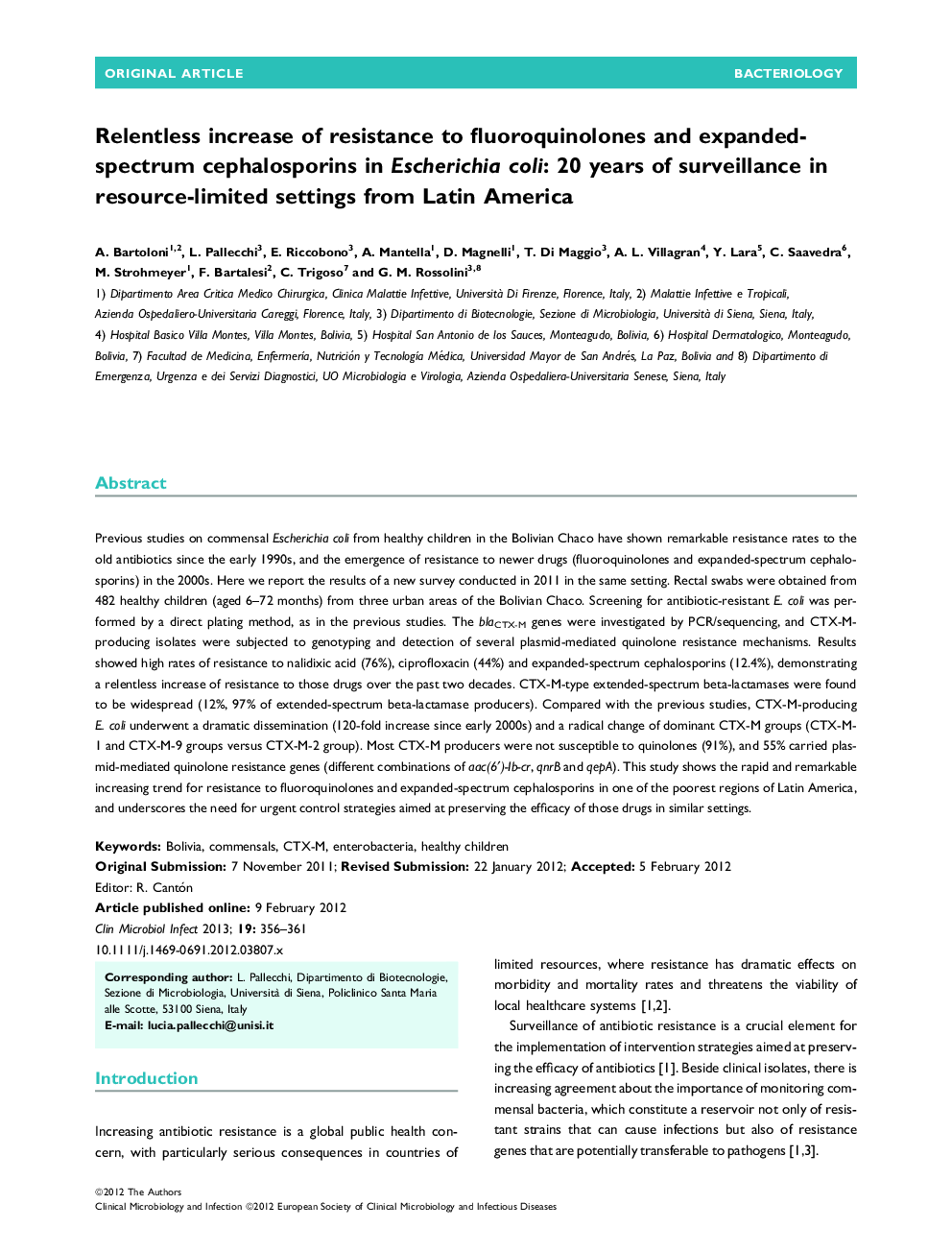| کد مقاله | کد نشریه | سال انتشار | مقاله انگلیسی | نسخه تمام متن |
|---|---|---|---|---|
| 3396770 | 1222189 | 2013 | 6 صفحه PDF | دانلود رایگان |

Previous studies on commensal Escherichia coli from healthy children in the Bolivian Chaco have shown remarkable resistance rates to the old antibiotics since the early 1990s, and the emergence of resistance to newer drugs (fluoroquinolones and expanded-spectrum cephalosporins) in the 2000s. Here we report the results of a new survey conducted in 2011 in the same setting. Rectal swabs were obtained from 482 healthy children (aged 6–72 months) from three urban areas of the Bolivian Chaco. Screening for antibiotic-resistant E. coli was performed by a direct plating method, as in the previous studies. The blaCTX-M genes were investigated by PCR/sequencing, and CTX-M-producing isolates were subjected to genotyping and detection of several plasmid-mediated quinolone resistance mechanisms. Results showed high rates of resistance to nalidixic acid (76%), ciprofloxacin (44%) and expanded-spectrum cephalosporins (12.4%), demonstrating a relentless increase of resistance to those drugs over the past two decades. CTX-M-type extended-spectrum beta-lactamases were found to be widespread (12%, 97% of extended-spectrum beta-lactamase producers). Compared with the previous studies, CTX-M-producing E. coli underwent a dramatic dissemination (120-fold increase since early 2000s) and a radical change of dominant CTX-M groups (CTX-M-1 and CTX-M-9 groups versus CTX-M-2 group). Most CTX-M producers were not susceptible to quinolones (91%), and 55% carried plasmid-mediated quinolone resistance genes (different combinations of aac(6')-Ib-cr, qnrB and qepA). This study shows the rapid and remarkable increasing trend for resistance to fluoroquinolones and expanded-spectrum cephalosporins in one of the poorest regions of Latin America, and underscores the need for urgent control strategies aimed at preserving the efficacy of those drugs in similar settings.
Journal: Clinical Microbiology and Infection - Volume 19, Issue 4, April 2013, Pages 356–361